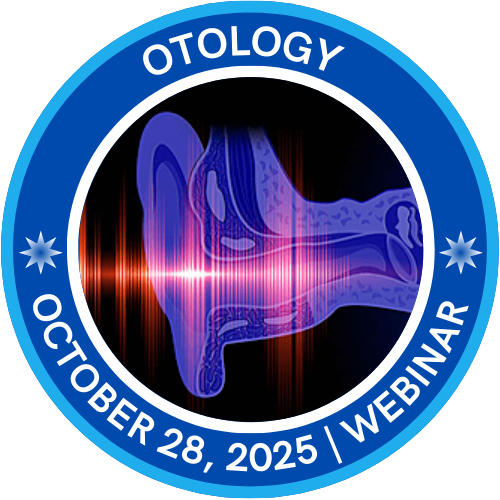Join us virtually for the Webinar on Otology and Laryngopharyngeal Disorders, scheduled to take place on October 28, 2025 where leading ENT specialists, researchers, clinicians, and healthcare innovators from around the globe will converge to share insights and advancements in the field of otolaryngology. This year’s conference, themed "Sound to Speech: Advances in ENT Care," will spotlight cutting-edge research, diagnostic technologies, and evolving therapeutic strategies for disorders of the ear, larynx, pharynx, and upper respiratory tract. Discussions will range from chronic otitis media and hearing loss to laryngopharyngeal reflux, voice dysfunctions, and surgical advancements. We look forward to a dynamic exchange of knowledge, collaborative dialogue, and actionable outcomes that will elevate patient care and shape the future of ENT medicine.
Otology and Laryngopharyngeal Disorders encompass a wide range of conditions affecting the ear, larynx (voice box), and pharynx (throat), playing a critical role in hearing, balance, speech, and swallowing. Otology focuses on the diagnosis and treatment of ear disorders such as hearing loss, tinnitus and otitis media, cholesteatoma, and balance disturbances like vertigo. Innovations in auditory implants, microsurgery, and vestibular rehabilitation continue to transform patient outcomes. Laryngopharyngeal disorders involve conditions such as laryngitis, vocal cord dysfunction, dysphagia (difficulty swallowing), laryngopharyngeal reflux (LPR), and cancers of the throat and voice box. These disorders can significantly affect communication, breathing, and quality of life, requiring a multidisciplinary approach involving ENT specialists, speech therapists, and gastroenterologists. With the integration of endoscopic technologies, voice analysis tools, and minimally invasive techniques, the field is rapidly evolving. Continued research and clinical collaboration are essential for advancing early diagnosis, personalized treatment plans, and improved patient care in otolaryngology.

The global otology and laryngopharyngeal disorders market is expected to witness notable growth from 2024 to 2035, driven by rising prevalence of hearing loss, voice and swallowing disorders, increased aging population, and advancements in surgical and diagnostic technologies. In 2024, the market is valued at approximately USD 17.2 billion and is projected to reach around USD 36.5 billion by 2035, expanding at a compound annual growth rate (CAGR) of 7.1%. The hearing care segment, including hearing aids, cochlear implants, and assistive listening devices, is expected to grow from USD 9.4 billion in 2024 to USD 21.6 billion by 2035, at a CAGR of 7.9%, driven by increased access to auditory rehabilitation and rising noise-induced hearing conditions. The voice and laryngeal disorders market, covering conditions like vocal cord paralysis, laryngitis, and laryngeal cancer, is forecasted to grow from USD 3.1 billion in 2024 to USD 6.8 billion by 2035, reflecting a CAGR of 7.3%, as awareness around voice health and professional voice therapy increases. Meanwhile, the dysphagia (swallowing disorders) segment is projected to rise from USD 2.2 billion in 2024 to USD 5.4 billion by 2035, growing at 8.5% CAGR, supported by advancements in diagnostic tools and speech-language pathology services. Technological innovations such as endoscopic ENT surgery, robotic-assisted laryngeal procedures, and AI-based voice analysis are significantly enhancing clinical outcomes and efficiency. The ENT surgical devices market, including endoscopes, powered instruments, and laryngoscopes, is expected to increase from USD 2.5 billion in 2024 to USD 6.1 billion by 2035, at a CAGR of 8.6%, driven by rising ENT surgeries and minimally invasive procedures.